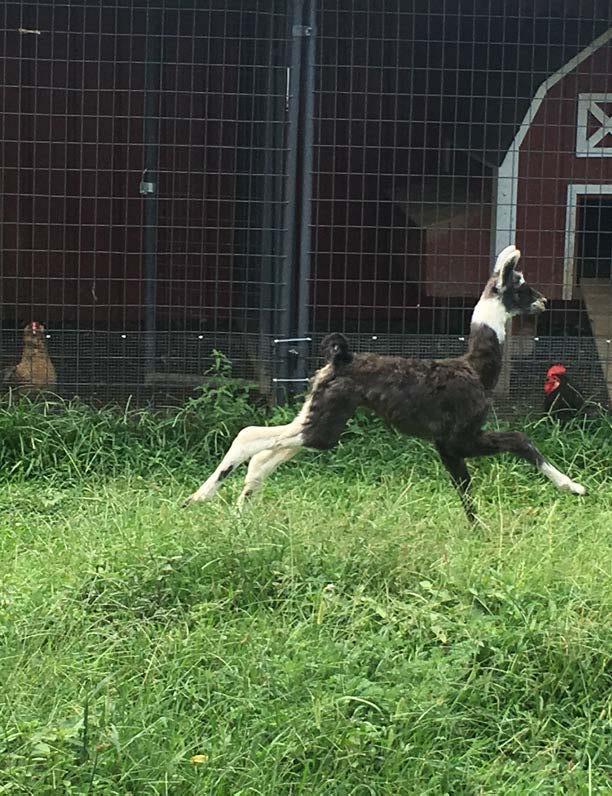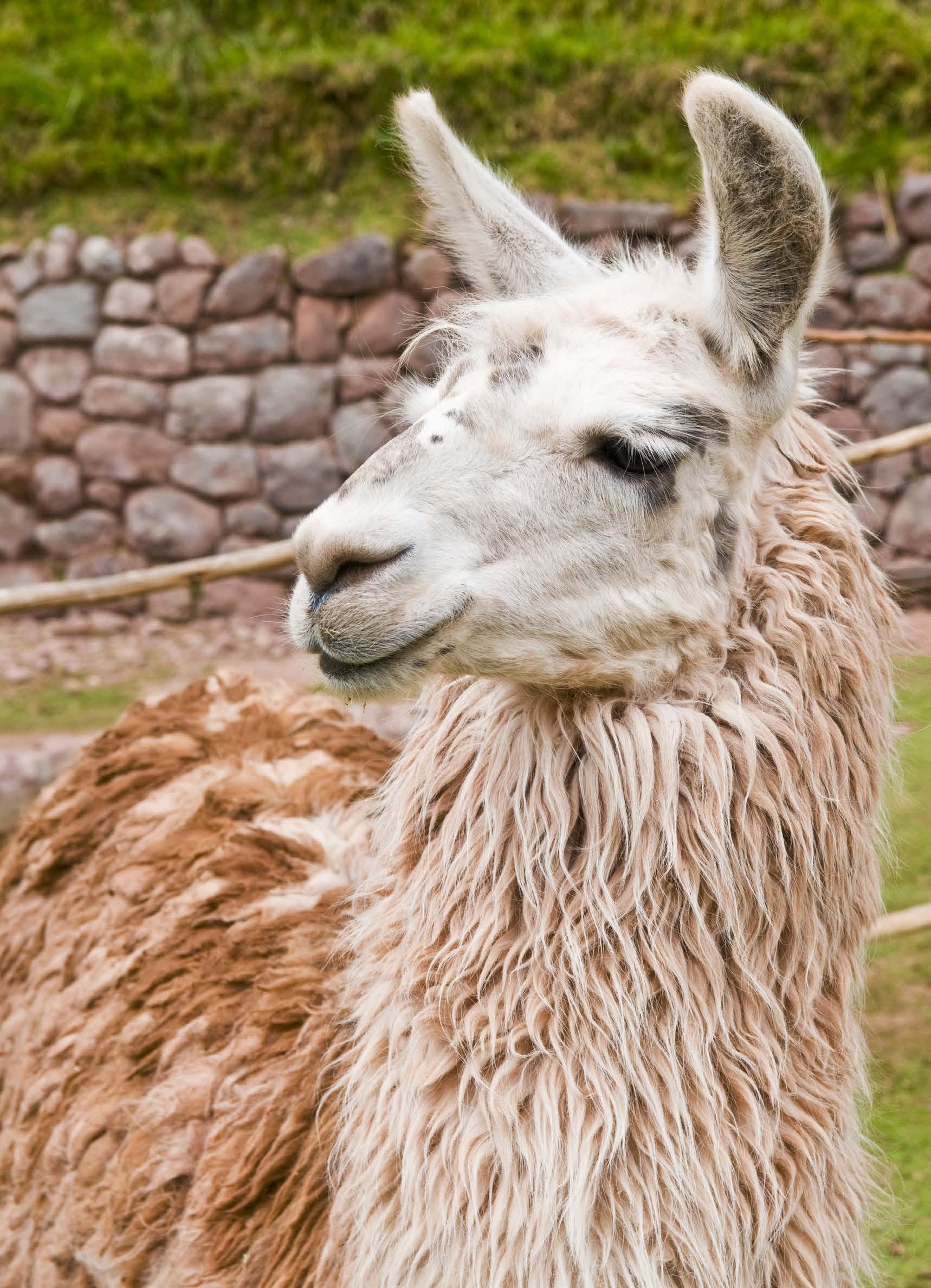
12 minute read
by Tracy Weaver
WHAT CAN YOU DO WITH LLAMA FIBER? Felt, Spin Yarn, Weave, Knit Or Crochet
by Tracy Weaver
Advertisement
Lotsa Llamas • Hudson FL
I have owned llamas for 20 years and really never connected the words above to these exceptional animals. Until now!
Growing up, I watched my mother knit. She made many, many items. Although I never understood what the product was made from. The yarn she used came from the store!
Knitting Crocheting
Now after years of owning llamas and participating in judging and fiber classes, I appreciate the in depth process of the usable fiber. We raise an animal for the hair it produces. It is cleaned, shorn, skirted, washed, dried, carded, and made into batts, Washed fiber drying on skirting tablerovings or yarn to make very
unique and beautiful items.
My earliest memory of using our llama ‘wool’ was when my daughter, Sarah, wanted to do a spinning demonstration for the State Fair. We had obtained a spinning wheel as a gift and that got us both interested in the product of our llamas.
Spinning fiber into yarn the other hand, did not excel as she did.
So, years gone by, I now have become a big advocate on using the product of our animals. It is just a waste to throw it away, or stash it in the garage in a plastic bag.
It, as any other job, does take some time to learn the trade.
I began to use our fiber more, when teaching middle school Agriculture. The ‘llama unit’ was an anticipated time during the school year.
I participated at an ALSA judging clinic in Indiana. The farm was also preparing for an open house for their farm the following week.
They were making felted animals using cookie cutters. I was in awe! What a great project for students to take home at the end of the llama unit.
So, at school, after learning about the animals, we used their fiber to make felted cookie cutter animals. It was fabulous! They carded the wool, and then used felting needles to make various animals. The students realized that they were using a raw agricultural commodity and turning it into a usable product.
Weaving on a table loom
Felting projects
Now, after attending numerous judging clinics and studying about the qualities of llama and alpaca fiber, I too, am having great fun sharing my knowledge about the animals’ fleece and delight in processing the fiber.


Florida Alpaca & Llama Association (FALA) members give a spinning demonstration at the Florida State Fair
There are so many talented people I have learned from through the years. The sharing of information and technique in the llama, alpaca and community is extraordinary! All one has to do is ask! take’ during our annual conference in March. Many fiber shops have scheduled days to make and take particular items during certain holidays. The knowledge can then be converted to llama creations. I meet with a special group of women
When I began researching for this article, I was overwhelmed. There are so many people with fleece and fiber information, I did not want to duplicate material.
There are loads of great articles about the fleece and using the fiber of an animal online…just GOOGLE it! I also found many YouTube videos about using the fiber. Many of the fiber techniques are very simple, but many require more expensive tools. As a beginner, look for the kid projects first and practice with less money and time. Then you can decide; felting, spinning, weaving, knitting or crochet! Or all of the above!
If you want individual help, there are many organizations and people that meet locally to help you with your particular interest.
Our Florida Alpaca Llama Association (FALA) holds a Fiber Day in June for demonstrations, and the Southern States Llama Association (SSLA) has begun a fiber ‘make and
“You will soon have dear friends willing to share their knowledge and experience with you, simply because they want to spread the joy of working with fiber.”
“Discover Llama Fiber-Love at First Touch” by June Black , 2007 Discover Llamas
My passion has become not only to advocate for these versatile and beautiful animals, but to educate about the products that can be made from their fleece.
About the Author: Tracy Weaver is a former Agriculture Instructor in Pasco County, Florida. She taught middle and high school agriculture for 33 years. She is a certified ALSA Halter/Performance/ Fleece Judge for Llamas and Alpacas. She currently serves as Secretary for the FALA, and Board member for the SSLA. Tracy also has been a volunteer for the Florida State Fair Llama show for 17 years, the past 7 as Superintendent of the Youth Llama/ Alpaca Show.
PET PARTNERS WITH LLAMAS
by Niki Kuklenski
JNK Llamas • Bellingham WA

Doing Volunteer Pet Therapy Work can be one of the most rewarding ways to give your time to others! Making a small and important difference in the life of someone not as fortunate as you can be a tremendous gift to not only yourself. When I first started working with llamas, I began to realize that I wanted to find ways to spend time with my animals, while at the same time, sharing them with others.
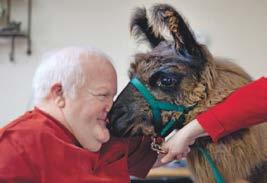
For many years, I have visited local nursing homes, schools, parades and other Public Relations events. Whenever doing these events, taking into consideration which llama I could trust to behave and be safe around people who don’t always use “good sense” was VERY important. One negative experience could not only land you into litigation, but also create all kinds of negative press for llamas. In order to protect yourself and your llamas, you have to always be one step ahead of what could happen.
Seven years ago, I finally took the giant step and registered two of my breeding males through Delta Society Pet Therapy Partners (now called Pet Partners https://petpartners.org/). Since then I have also registered the daughter of one of these males, along with three other llamas. My personal choice to do two originally was based on the fact I thought it is unfair (to the llama) to always take the same llama to these things repeatedly. If something were to happen to one of my boys (open wound, injury, sickness or death) I would have a replacement to do therapy work. Missing a scheduled appointment can have a huge impact on some of the people you choose to spend time with. Remember to always keep this in mind. I also selected these particular llamas as I knew 100% of the time they would NEVER kick, move when asked to stand, or hurt anybody. This is extremely important when you are visiting facilities that have patients who are frail.
The first step is to setup a complete physical exam complete with shots (rabies and TB are two of them) done by your veterinarian. The actual testing process involves written and physical demands. The written portion can be taken by going to classes or through an online version. The physical testing involves various realistic scenarios set up to see how your llama behaves. In my personal testing we were exposed to wheelchairs, constant touching all over, walkers, slippery floors and stairs, brushing, yelling patients, treats, leading by other handlers and much more. My llamas passed allowing them to be registered as complex (meaning we as a team can be trusted to work in stressful situations with little supervision). Once this is all completed you mail the three items to Pet Partners with your fees.
When volunteering there are many things you need to do before you actually go visit. Your animal needs to be really clean, which in the Winter can be challenging. I brush and blow mine out during that time of year, then I lightly coat them with a fiber lubricant like Showsheen. During the Summer they receive baths, shearing and brushing. Toenails must be trimmed, and routine fecals should be done. Your llama should look like it is well cared for and groomed. I
personally have halters and leads I use for ONLY my therapy work. They stay in the house in a clean spot to assure they will be nice every time I go to use them. I also keep their Pet Partners Tags on them to show they are registered in case there should ever be a question. There is a therapy vest you can purchase that was originally designed for a miniature horse. Because the strap in the front did not fit right, I removed it and put it on the belly portion of the vest creating two girth straps instead of one. I keep treats in it and for holidays put candy inside for kids and adults to take out. This helps to get people over their fears and myths about llamas. This is of course with prior approval from the facility I visit.
Once you have heard about your registration status and know you are approved to volunteer, you should consider your options. I did a lot of internet research in my area before finally settling on volunteering at a local home for HIV positive men as my first assignment. There was no particular reason I chose this facility, other than simply based on my research I thought it would be interesting to give my time to. Currently, I am volunteering at 5 nursing homes in the regular resident areas and the memory care units. I also volunteer during the summers at a Paul Newman “Hole in the Wall Camp” called Camp Korey. The children who attend
this camp have life threatening illnesses and challenges. As I visit, I always keep my eyes out for potential issues that may arise and compromise the safety of everyone involved. It really is a balancing act while you are doing this sort of work.
You should NEVER use an animal that is not 100% healthy. You should make sure your animal is up to date on all vaccination, worming and routine health care items. Remember to keep in mind that if you do violate any of the Pet Partner policies in place, you will not be protected by their insurance. One small problem could create an even bigger problem in the delicate balance some people live day to day with. If in doubt, do NOT take them until you feel completely comfortable. You could also potentially compromise the status of other camelids that want to volunteer in the future.

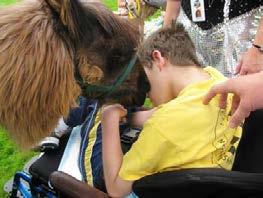
All photos courtesy of the author.
About the author: Niki Kuklenski and her husband Jeff are very involved with all aspects of owning llamas. Niki rewrote the testing and information for Delta Society in 2009. Niki and Jeff drive, show, pack and educate with their llamas. Niki’s passion is llama history and memorabilia. She spends most of her free time tracking down old pictures and llama owners to help preserve our industry’s history. When not doing that, she is driving her llamas! Niki has 7 Pet Partners registered therapy llamas!
For Therapy Llama Questions: Niki Kuklenski JNK Llamas Phone: 360-592-2603 Email: info@jnkllamas.com, On the web: www.jnkllamas.com
“Registered Therapy Llamas”
“Therapyllamas”
“Therapyllamas”
For questions or for more information, please contact:
875 124th Ave NE, Suite 101 Bellevue, WA 98005-2531, USA Phone: 425-679-5500 (M-F 8:30 AM-4:30 PM PST) Fax: 425-679-5539 https://petpartners.org
Snow, Gwen & Tush relaxin’ after the Pack Trial. Photo by Tom Wilson

Tush is on the lookout for gators. Yikes! Photo by Mary Rose Collins Sayla & Splash become friends. Photo by Dorthe Peloquin
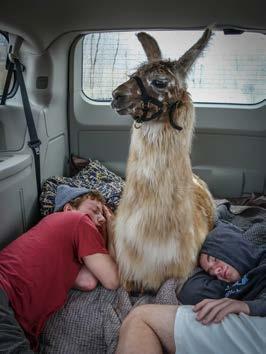
Show Stoppin’ finds himself wide awake at nap time. Photo by Maureen Hall


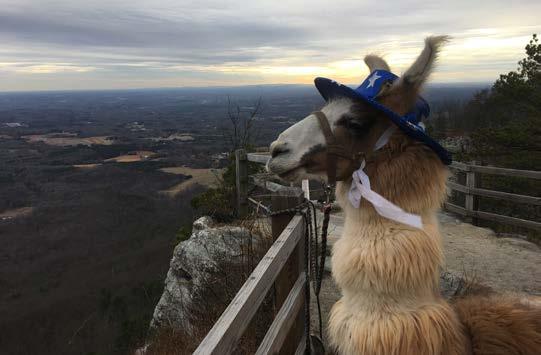
Terry discovers Bama, a stowaway, in his pack. Photo by Dorthe Peloquin

Karen Oertley-Pihera, D.V.M. (770) 893-2376 153 Lovelady Rd. W. Ball Ground, GA 30107 kpihera@aol.com

Dr. Michael J. Zager

88 All Creatures Place Blue Ridge, Georgia 30513 Tele: 706-632-PETS (7387) Fax: 706-632-7807 e-mail:ocoeeanimalhospital1@tds.net www.ocoeeanimalhospital.com

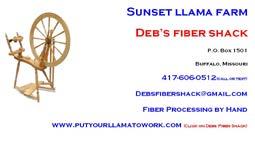
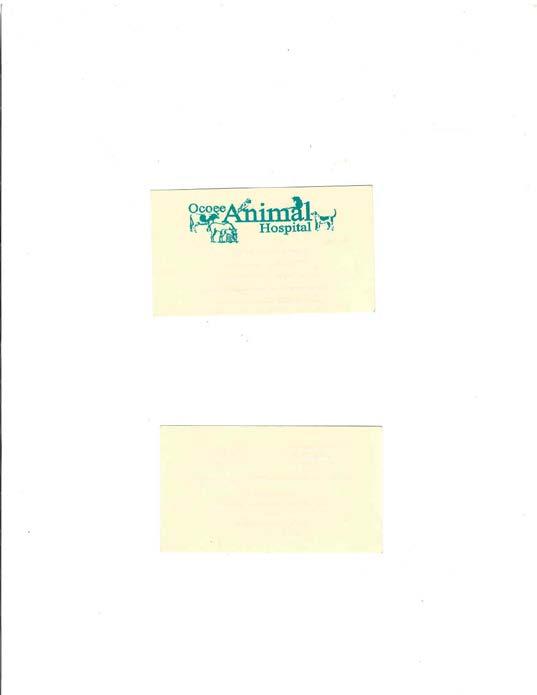
Tracy Weaver
ALSA Llama/Alpaca Judge Halter Performance Fleece
727.457.3578 lotsallamas@earthlink.net
LAMA RELATED WEB SITE REFERENCE LIST
ORGANIZATION SITES:
ALSA (Alpaca & Llama Show Association).........................................................................................alsashow.org AMLA (American Miniature Llama Association)....................................................................miniaturellamas.com Camelid Community...............................................................................................................camelidcommunity.us COLA (Central Oregon Llama Association)........................................................................centraloregonllamas.org GALA (The Greater Appalachian Llama and Alpaca Association).....................................................galaonline.org ICI (International Camelid Institute)...........................................................................................................icinfo.org ILR (International Llama Registry)................................................................................................lamaregistry.com FALA (Florida Alpaca and Llama Association, Inc.)...………………...................................….............falainc.com LANA (Llama Association of North America).......................................................................................lanainfo.org ORVLA (Ohio River Valley Llama Association).......................................................................................orvla.com PLTA (Pack Llama Trail Association)..................................................................................................packllama.org RMLA (Rocky Mountain Llama & Alpaca Association)............................................................................rmla.com SELR (Southeast Llama Rescue).......................................................................................southeastllamarescue.org SSLA (Southern States Llama Association)...................................................................................................ssla.org Suri Llama Registry........................................................................................................................lamaregistry.com
PERIODICAL SITES:
The Backcountry Llama...................................................................................................thebackcountryllama.com International Camelid Quarterly..............................................................................................camelidquarterly.com Llama Life II........................................................................................................................................llamalife.com
POISONOUS PLANT SITES:
For poisonous plant sites, please see “Green and Safe” on page 39 of this publication
VET SCHOOL SITES:
Auburn University College of Veterinary Medicine...................................................................vetmed.auburn.edu Colorado State Unversity College of Veterinary Medicine & Biomedical Sciences..........csu-cvmbs.colostate.edu Kansas State University College of Veterinary Medicine………………...........................…...........vet.k-state.edu North Carolina Sate University College of Veterinary Medicine........................................................cvm.ncsu.edu Ohio State University College of Veterinary Medicine.................................................................vet.ohio-state.edu Oregon State University College of Veterinary Medicine...................................................vetmed.oregonstate.edu Penn State University College of Agricultural Sciences Veterinary and Biomedical Sciences...............vbs.psu.edu Tufts University School of Veterinary Medicine....................................................................................vet.tufts.edu University of California-Davis School of Veterinary Medicine.................................................vetmed.ucdavis.edu University of Florida College of Veterinary Medicine.......................................................................vetmed.ufl.edu University of Georgia College of Veterinary Medicine...........................................................................vet.uga.edu University of Missouri College of Veterinary Medicine……………...........................…............cvm.missouri.edu University of Tennessee College of Veterinary Medicine........................................................vetmed.tennessee.edu Washington State University College of Veterinary Medicine........................................................vetmed.wsu.edu
901-233-7331
Christiana, TN
Rebecca Wood

